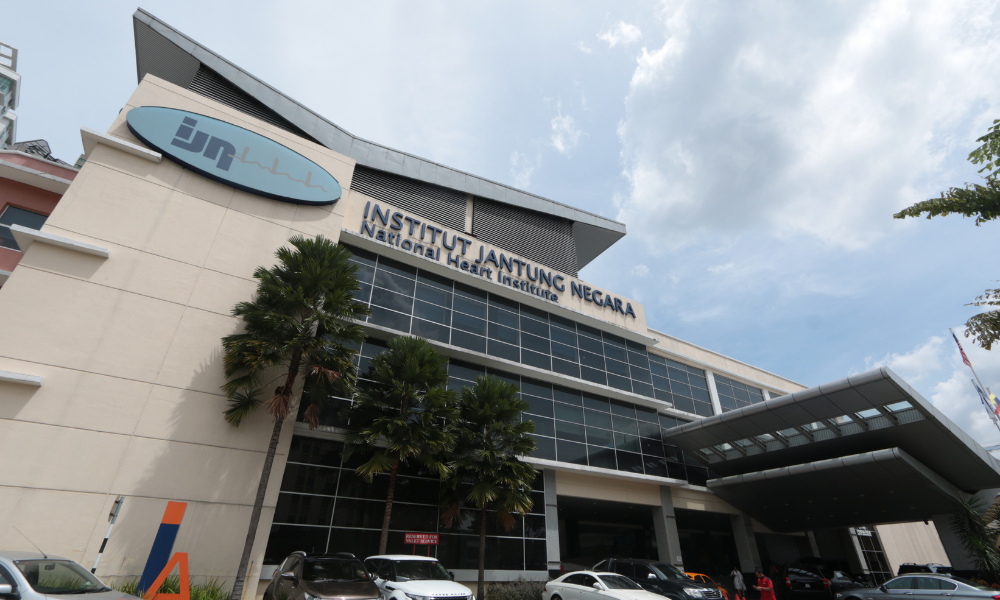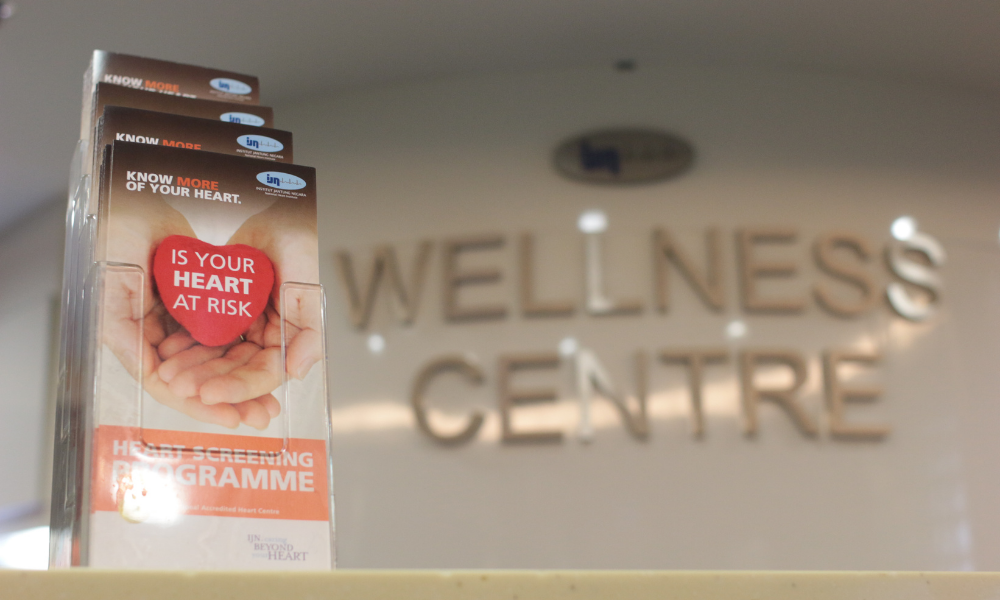Recognizing Heart Emergencies (Heart Attack)
The heart is a vital organ in our body as it is the engine of our circulatory system. It continuously pumps blood to circulate throughout the body from the time we were a fetus, until the last day of our lives. Any disruption to the heart may affect other vital organs in our body. Although the heart’s function is to pump blood, it also requires blood supply to operate properly. Heart attacks happen when the blood supply to the heart is compromised. It is important to recognize and detect the signs and symptoms of a heart attack, so prompt treatment can be given as soon as possible.
Signs & symptoms To Look Out For
Patients may present with typical or atypical signs and symptoms of heart attack. Those with typical signs are easier to detect and diagnose. They may present with chest pain or chest discomfort, commonly described as heaviness or tightness in the chest area. The symptom of chest pain is usually triggered by physical exertion, but it may occur even when the patient is resting. The pain may radiate to the neck, back, shoulders or arms. The chest pain may also subside with rest or medication, but in some patients, the pain may be more prolonged. Other typical signs of a heart attack may include shortness of breath, palpitation, sweating, nausea, dizziness or fainting spells.
A group of patients, especially females and the elderly, may present with atypical symptoms of a heart attack. These signs are not specific for a heart attack and may be missed by the patient, or by a doctor attending to the patient’s complaint. They may experience pain at the epigastric area, which is the area between the lower chest and upper abdomen. This epigastric pain may be attributed to ‘gastritis’ or better known as ‘gastric’, and the diagnosis of a heart attack may be missed.
Time is vital in the treatment of a heart attack as `Time = Muscle’. The longer the patient is having an undiagnosed and untreated heart attack, the more heart muscle will be damaged.
Patients with a severe heart attack may just collapse and lose consciousness as a large part of the heart malfunctions or stops functioning completely.
Thus, it is crucial to be aware of these symptoms and signs, and to seek medical attention promptly. The doctor assessing the patient must be vigilant in diagnosing a heart attack, especially when the patient presents with atypical symptoms. An Electrocardiograph (ECG) is key in the diagnosis of a heart attack, and must be done immediately in patients complaining of chest discomfort or chest pain.
What are the steps that you can do to help someone having a possible heart attack?
Make sure that the person is in a safe environment. Get the patient to be in a seated, or lying position, whichever position they feel comfortable. Make sure that the person is not in danger of injuring himself if he falls or loses consciousness.
If the person is alone, assist in notifying their family members or friends. If the person is a known heart disease patient, they may have their own medication with them. Assist them in taking their medicine to ease the chest discomfort (Glyceryl Trinitrate or GTN is a tablet to be put under the tongue when patients experience chest pain).
Call an ambulance by dialing 999 or a specific ambulance number that you are familiar with. Describe as accurate as you can the location of the person you are attending to so the ambulance crew can arrive promptly. Communicate what you know and have done, and assist the ambulance personnel once they have arrived.
If the person suddenly loses consciousness, they may have had a cardiac arrest. This is when the heart stops pumping effectively, and no blood supply is delivered to the vital organs, especially the brain. Without sufficient blood supply, the brain will be injured within minutes. Patients in cardiac arrest require prompt and immediate Cardiopulmonary Resuscitation (CPR). If you are trained in CPR, start chest compressions as soon as possible. Their chances of survival are increased if they receive good quality by-stander CPR. Without CPR, the chances of survival decreases 10% with every minute, and approaches zero within 10 minutes.
How to Perform A CPR
The ‘chest compression only’ CPR is the most basic CPR method, yet is effective. This does not require mouth-to-mouth rescue breathing, which many of us are not comfortable performing especially to a stranger. Good quality CPR involves pushing the chest hard, and pushing the chest fast. The depth and speed of the chest compressions are vital to give the patient the best chance of survival. It is important to allow proper chest recoil after each chest compression. This allows blood to fill the heart, and helps to increase the outflow of blood to the organs when the heart is compressed again.
Learning proper CPR technique is crucial in saving lives. Everyone should be trained to do Basic Life Support (BLS), and at least one member of each household should be proficient in performing CPR, especially if there are family members who are at risk of a heart attack.
The CPR Faculty in IJN organizes courses throughout the year for laypersons and medical staff. For the public, there are the Basic Life Support (BLS) and HeartSaver CPR courses available. The American Heart Association (AHA) Advance Cardiac Life Support (ACLS) Course is available for medical personnel.

Treatment of Heart Attacks in IJN
Heart attacks occur when at least one of the major blood vessels to the heart become acutely blocked, usually by a blood clot in an already narrowed blood vessel due to diseases such as high blood pressure, diabetes and smoking. Any patient with chest pain will immediately have an ECG performed within 10 minutes of arrival. Once the diagnosis of a major heart attack is made (ST-Elevation Myocardial Infarction or STEMI), the patient will be prepared for a treatment called Primary Percutaneous Coronary Intervention (PPCI). PPCI, which is also known as balloon and stenting, is the best treatment available for an acute heart attack. This treatment modality is available in IJN 24 hours in a day, 365 days in a year. Prior to PPCI, the patient will be stabilized and optimized in the Emergency Department (ED). The patient will be given medication to thin the blood (antiplatelets and antithrombotic medication). He or she will then be brought to the Interventional Cardiac Laboratory (cath lab) for the PPCI procedure to be performed. This is done very fast as Time = Muscle. Our aim is to bring the patient to the cath lab and perform PPCI within 90 minutes of arrival to the ED. With many years of experience, IJN have streamlined and perfected the flow of heart attack patients. In 2021, our average time to perform PPCI from patient’s arrival to ED was 54 minutes. A small proportion of patients may not be suitable for PPCI. There are other treatment modalities available using medication called Fibrinolytics which can dilute the blood clot that was causing the blockage in the major blood vessel of the heart. Heart attack patients will be admitted to a Coronary Care Unit for further management and close monitoring.
24 Hour Heart Attack Center
To improve our services as a Heart Attack Center, IJN has established a partnership with First Ambulance Service (FAS) in April 2019. The public has an option to utilize the FAS team, especially if they suspect of having a heart attack. A toll-free number can be contacted and the FAS ambulance crew will attend to the caller immediately. The paramedics will perform an ECG, which is shared immediately via email to the doctors in the Emergency Department, before the patient is brought to the hospital. If the diagnosis of a heart attack is made (STEMI), the IJN ED will activate the Cardiology team to prepare for PPCI. By the time the patient arrives at the ED, the Cardiology Lab team is ready and the process is expedited with minimal time spent in ED prior to going to the lab. This is one of the reasons why the IJN Door-to-Balloon(DTB) time of 54 minutes in 2021 was within the international standards for DTB time.

IJN has also collaborated with Hospital Kuala Lumpur (HKL) since 2015, and established a network for heart attack patients presenting to HKL. This network collaboration has reduced the waiting time for HKL patients with an acute heart attack to receive PPCI treatment in IJN.
With all these initiatives and improvements, IJN has successfully recorded a decrease of mortality rate for heart attack cases from 15.8% in 2009 to just 3% in 2019. This compares well with overall Malaysian data for in-hospitality mortality rate for heart attacks, which sits at 10.6%.
Risk Factors
The risk factors for heart attacks are many, and can be classified into ones that can be modified and those which cannot. Non-modifiable risk factors includes a strong family history of heart disease, increasing age and male sex. Risk factors that can be modified include smoking, obesity, diabetes, high cholesterol, hypertension and stress.
It is best to avoid a heart attack from happening. Thus, it is important for us to seek medical advice especially if there are symptoms suggestive of a heart attack, no matter how mild the symptoms are. IJN has an extensive team of experts in Cardiology, Cardiothoracic and Vascular Surgery, with many years of experience. Our Interventional Cardiologists are capable of performing high-risk difficult angioplasty, with the support of the Cardiothoracic team. We also have experts in Endocrinology, Respiratory Medicine and Nephrology to support the Cardiology Services. IJN is also equipped with state-of-the art CT scans, Cardiac Magnetic Resonance Imaging (MRI), Positron Emission Tomography (PET) scans and even Nuclear scans.
For those without symptoms, having a regular medical checkup is also prudent, as many of us may have the risk factors of a heart attack without even being aware of it. It is important for everyone to monitor his or her weight, blood pressure, cholesterol level and blood sugar level. A baseline ECG and echocardiogram (ultrasound of the heart) should be done periodically. For those planning to take on more challenging activities, a more thorough check up should be done. An exercise stress test or a stress echocardiogram will be perfect to ensure that the heart is ready for activities that are more strenuous. The Wellness Center in IJN offers affordable, comprehensive medical check-up packages that are designed to the patients’ needs and conditions.
It is never too late to take charge of our health and of our heart. Start by doing a medical check-up. Identify the risk factors, and slowly work to solve them one by one. Remember that ‘Prevention is better than cure’. Health is wealth.

For more information, head to IJN’s Health and Wellness packages as they offer more comprehensive health screenings, tests and consultations.
RM12.50 / month
- Unlimited access to award-winning journalism
- Comment and share your opinions on all our articles
- Gift interesting stories to your friends
- Tax deductable
